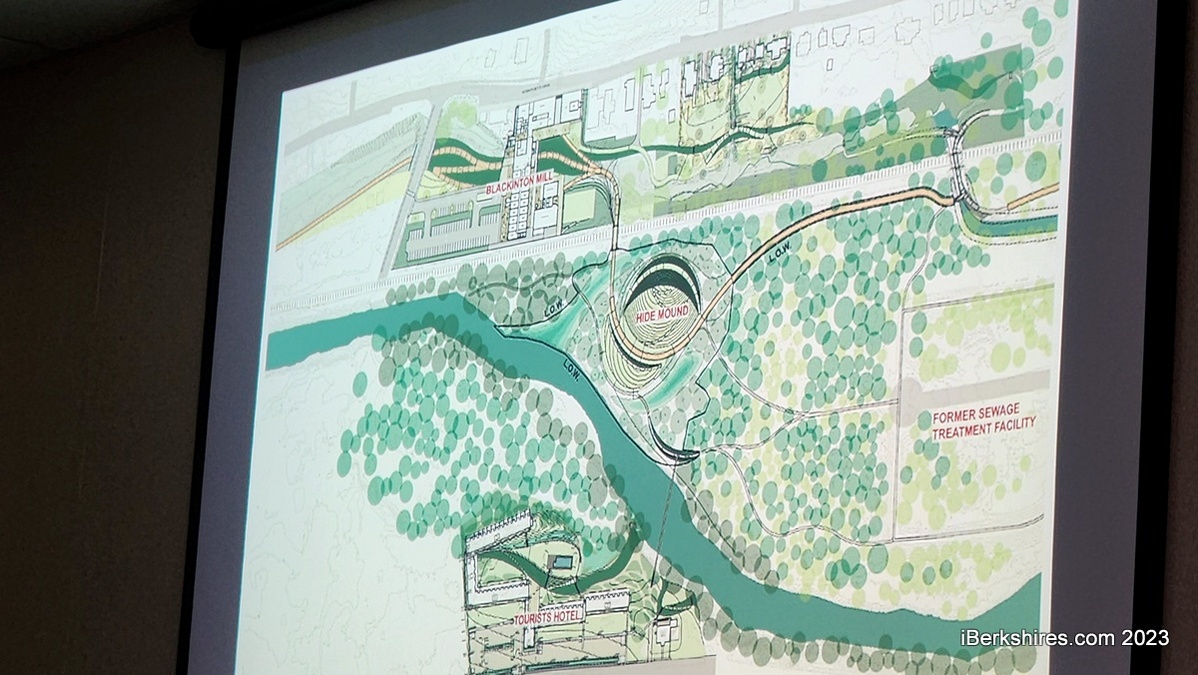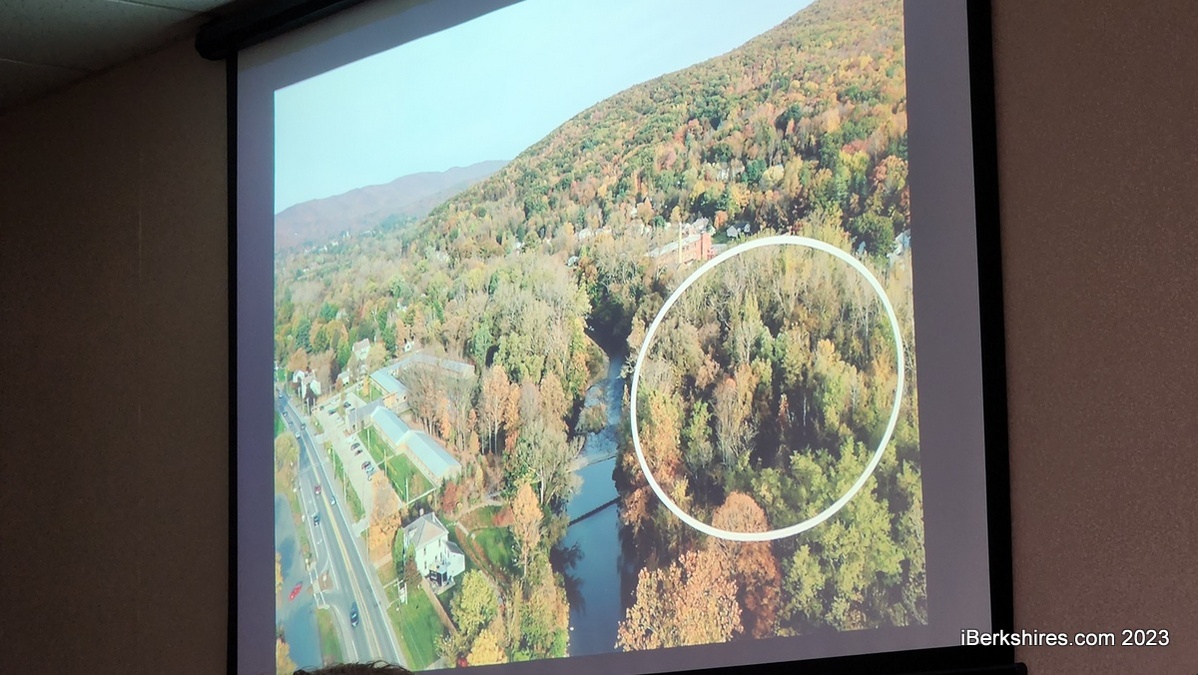
Mayor Jennifer Macksey speaks at Tuesday's City Council meeting as Tourists owner Ben Svenson looks on.
NORTH ADAMS, Mass. — The $17 million expansion plans for the Blackinton Mill are tripping over a 10-foot high pile hides that has been decaying for 60 years.
The partnership that operates Tourists resort says the whole project — including a proposed bike path — is in danger of failing before it even begins if a November grant deadline to clean up the mess isn't met.
But the Mayor Jennifer Macksey says more testing is needed before the city takes control of the one-acre site and is positing a February closing date.
On Tuesday, the partners were pleading with the City Council to use any tools it had to make the mayor abide by an agreement to close on the parcel before the deadline.
"I really don't want to say it will go away but we will not be able to sustain any longer unless we can resolve this issue," said principal Benjamin Svenson. "And so I appeal to you tonight to please — whatever tools you have — communicate to the mayor the urgency of resolving this matter."
The matter before the council was an authorization for the mayor to purchase the property, which would be for $1. The city would be able to apply for a U.S. Environmental Protection Act brownfield grant not available to the private entity.
"We need this to secure our financing," said Svenson. "We can't get a bank loan until we resolve this matter. ...
"Because this project has been delayed and delayed and delayed ... We are at a breaking point right now where we really need to resolve this urgently in order to get financing and keep everything on track."
Macksey said the city's consultant and the state Department of Environmental Protection have recommended two more tests, one that can be completed within three weeks and another that could take three months.
"I agree this is an important project. I want to work with Tourists, but I also have an obligation to the community to do our due diligence and that's what we're doing," she said. "I readily admit that we were slow out of the gate."
The mayor is asking for a 21E environmental assessment, which is used to determine contamination by releases of oil and/or hazardous material.
"We're hoping that we can get all of the testing done. But my job is to make sure that we're checking off the boxes and that we understand what we're inheriting," she said.
Svenson and co-owner Eric Kerns pointed to a 429-page report completed by Tighe & Bond assessing the mound and providing plans for capping and containment. The mayor was unmoved.
"They are very knowledgeable and I doubt that they're lying to me," she said. "But I have been advised by scientists who tell me to do this."
The hide mound is the detritus of the former Wieden Tannery that burned down in 1995. Kerns said estimates to contain and cap the site could run from $750,000 to a $1 million.
"It's just another layer of discovery," he said of the testing Macksey wants. "The tests were not part of the agreement ... now there's a new goal post."
Councilors asked why the mound was not mentioned when the partners presented their plans for
a 50-room hotel in the Blackinton Mill last month. Svenson said they were working under the assumption that the administration would abide by a memorandum of understanding signed on Nov. 7, 2022.
"The solution that was agreed upon in the memorandum of understanding is that the city would take title to the parcels and seek state and federal funds for remediation with our support and advocacy," he explained early in the presentation of the history of the property.
Svenson said, "new information and inconsistencies with the agreement" revealed that the council had to approve the purchase and that they had expected to be before the council two weeks prior.
Macksey said she wanted the authorization to purchase but did not wish to close until the second tests were done.
"I do want us to acquire this property so we can apply for grant funds and we can continue to work in a positive manner with Tourists," she said. "But I need a little more time, not for the acquisition but for the testing."
The city might miss out on brownfields funds in this round but there is more funding out there, the mayor said. She also indicated in answering councilors' questions that the city would still be inclined to purchase the property when testing is completed.
"At the end of the day, we all want the same thing. We want to clean up the land and we want it to be part of Tourists and we want to help it for the bike path," the mayor said. "But I feel I have a responsibility to take the recommendation of the professionals and do this extra test."
Svenson, Kerns and Vice President of Operations Nina Zacek Konsa were seated behind the mayor shaking their heads during her comments. Svenson spoke up several times to rebut Macksey's points.
But in the end, the council declined to push the mayor.
"I think what you're asking for are tools that we don't have," said Councilor Keith Bona. "I mean, we can obviously approve the purchase. But beyond that, we do not have the authority to tell the administration how they can proceed after that.
"We can encourage it but I think you've expressed it pretty well yourself."
Councilor Wayne Wilkinson called the question, which passed with five votes, and by roll call the council unanimously passed the order authorizing the mayor to purchase the property.





